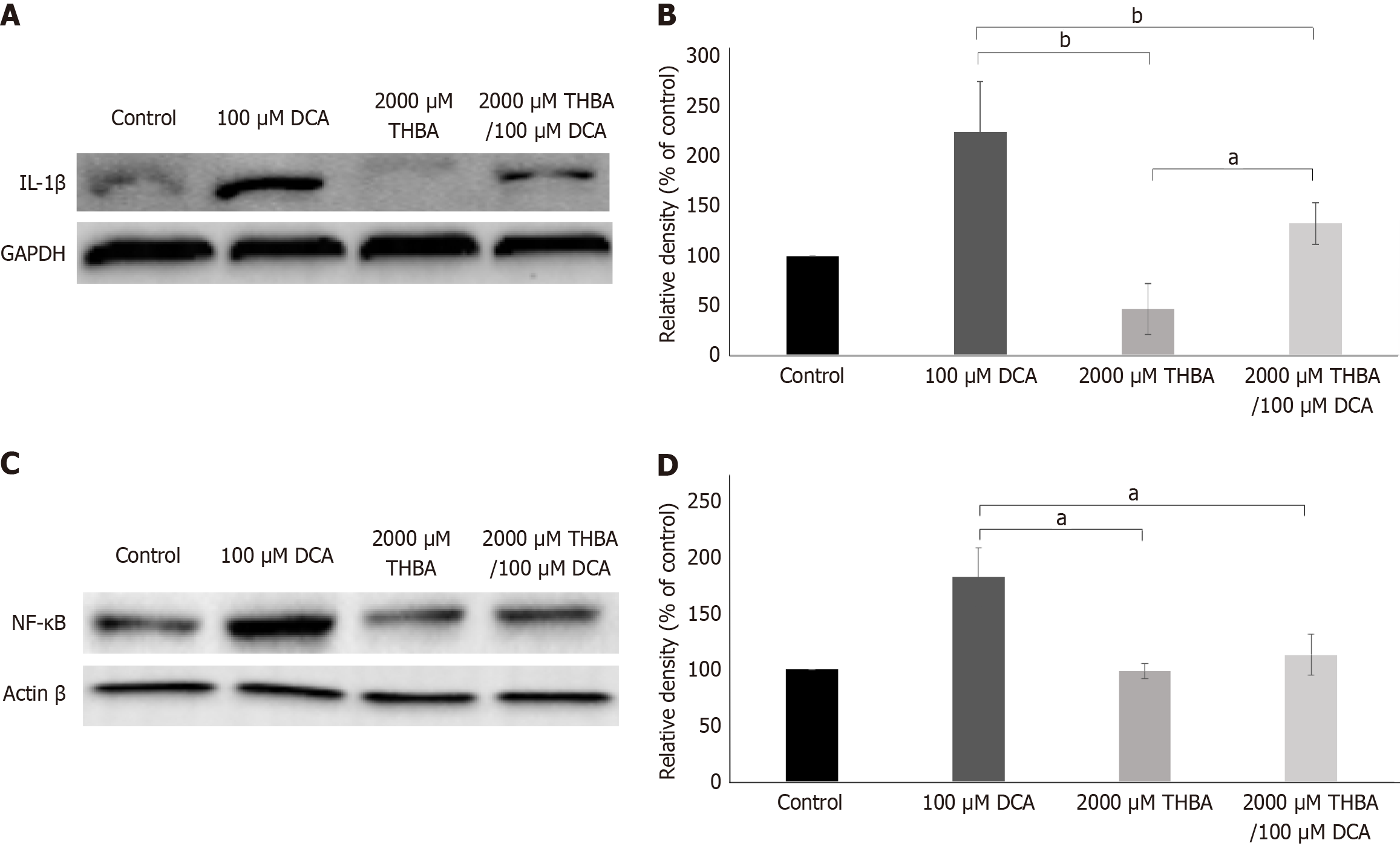Copyright
©The Author(s) 2025.
World J Gastroenterol. Aug 7, 2025; 31(29): 107066
Published online Aug 7, 2025. doi: 10.3748/wjg.v31.i29.107066
Published online Aug 7, 2025. doi: 10.3748/wjg.v31.i29.107066
Figure 7 Effect of deoxycholic acid and tetrahydroxylated bile acids co-exposure on interleukin-1β-nuclear factor kappa-B pathway activity in adult tissue-resident stem cells isolated from Barrett esophagus clinical biopsies.
Representative immunoblots demonstrating effects of deoxycholic acid (DCA) and tetrahydroxylated bile acids (THBA) co-exposure on interleukin-1β (IL-1β)-nuclear factor kappa-B (NF-κB) pathway activity in Barrett esophagus clinical biopsies (BE-ASCs). A: Cells treated with 100 μM DCA showed significant 2-fold increase of IL-1β protein expression in comparison to untreated cells. THBA and DCA co-exposure resulted in significant decrease of IL-1β expression vs DCA alone; B: Expression levels of IL-1β in BE-ASCs treated with 100 μM DCA, 2000 μM THBA and their combination-2000 μM THBA/100 μM DCA, were correlated with density levels measured by using ImageJ software; C: BE-ASCs treated with DCA demonstrated significant higher level of NF-κB phosphorylation in comparison to untreated cells and treated with combination THBA/DCA, THBA; D: Expression levels of NF-κB in BE-ASCs treated with 100 μM DCA, 2000 μM THBA and their combination-2000 μM THBA/100 μM DCA, were correlated with density levels measured by using ImageJ software. Data are presented as mean ± SD (n = 3). aP < 0.05. bP < 0.01. IL: Interleukin; DCA: Deoxycholic acid; THBA: Tetrahydroxylated bile acids; GAPDH: Glyceraldehyde-3-phosphate dehydrogenase; NF-κB: Nuclear factor kappa-B.
- Citation: Mamchur A, Duggan S, Xue H, Niu XJ, Wang YZ, Ma ZW, Kelleher D, Ling V, Gao ZH. Tetrahydroxylated bile acids prevents malignant progression of Barret esophagus in vitro by inhibiting the interleukin-1β-nuclear factor kappa-B pathway. World J Gastroenterol 2025; 31(29): 107066
- URL: https://www.wjgnet.com/1007-9327/full/v31/i29/107066.htm
- DOI: https://dx.doi.org/10.3748/wjg.v31.i29.107066









